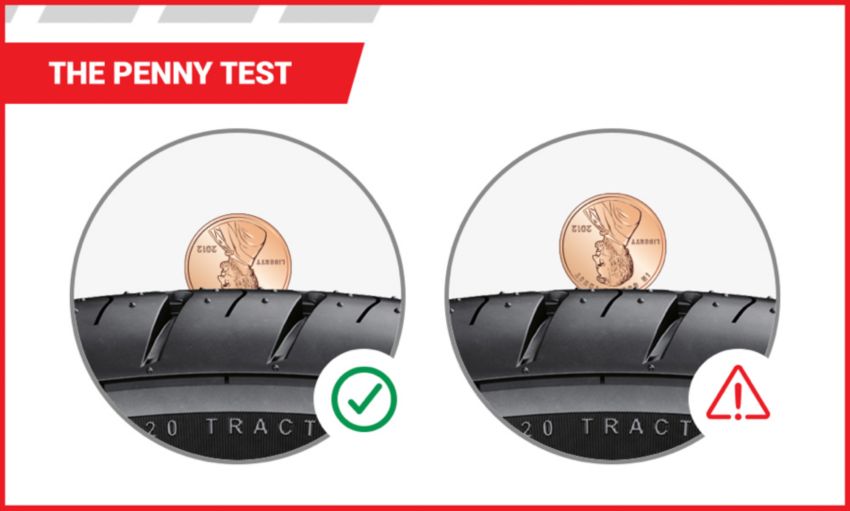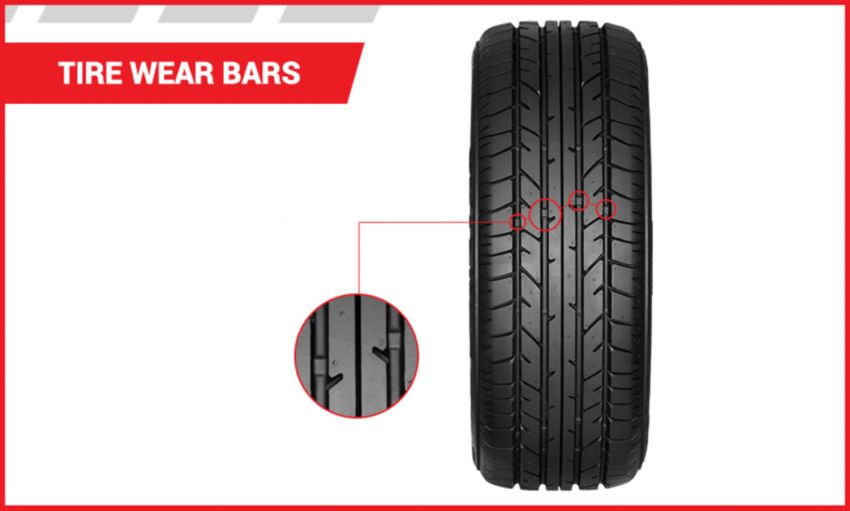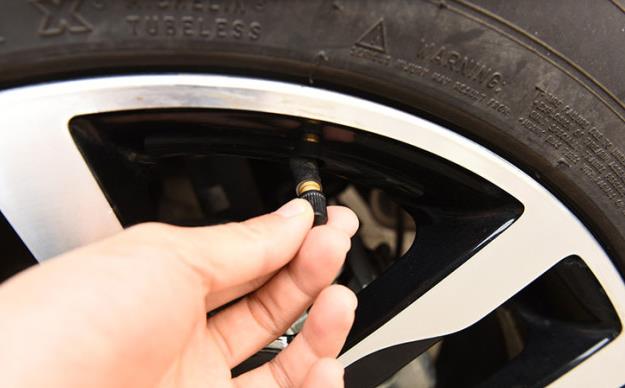Is It Safe to Drive on Bald Tires
The simple, straightforward answer to this question is "No." Operating a vehicle with tires that can be considered bald is a gigantic safety hazard for you, your passengers and other people on the road.
The condition of your tires is directly related to your vehicle's ability to accelerate, brake and handle turns. The better the tread, the better the performance.
How can I tell if my tires are worn out?It's all about tread depth. A new set of tires typically has a tread depth of 10/32" to 11/32" (winter tires or off-road tires may have a deeper tread).
Tires are considered legally worn out in most states when the tread depth is less than 2/32". Driving on tires with tread worn down this far is dangerous and could even get you a ticket.
The penny test
You don't need to be a tire tech to tell if your tread is worn down too far to be considered safe.
There's a quick and reliable way to check tread depth using a penny. Insert a penny upside down into the tire tread with Lincoln's head facing you. If any part of Lincoln's head is covered, the tread depth is still good. If not, it's time to invest in a new set of tires.
Tread depth gauge
Another great way to check each tire's tread depth is with a tread depth gauge. You can find a variety of different gauges online or at your nearest auto parts store. A typical tread depth gauge will be able to read from 1/32" to 32/32". Before using it, check which indicator to read because many will show measurements in both inches and millimeters. It's a good idea to take a measurement in three different grooves across the tread. The lowest reading is your measurement of your tread depth.
Tire wear bars
You can also tell if your tires are bald by looking at your tire wear bars. These are molded bars at the base of the grooves. The bars become flush with the surrounding tread when wear reduces a groove\'s depth to 2/32". At this point, it's time to replace your tires.
The Dangers of Driving on Worn Tires
As a tire wears down, it increasingly loses its road gripping ability.
At 2/32" of tread depth, the tire has lost its traction benefits on snowy roads and will have significantly decreased traction in rainy weather. If you regularly drive in wet or snowy conditions, 4/32" is a good point to consider replacing your tires.
Driving in rain
When the tread grooves aren't deep enough to channel out water from under the tire, it can result in hydroplaning. Your tire skims the top of the water like it's on the world's most dangerous Slip 'N Slide and no longer responds to the steering wheel inputs, which can be a very harrowing and potentially dangerous situation.
Driving in snow
Deep grooves and an array of small slits, called "sipes," help most new tires and winter tires bite into the snow. A shallower tread and worn-away sipes result in reduced road gripping ability, making it harder — and sometimes impossible — to accelerate, stop or corner safely on snowy roads.
Unlike an all-season tire, the wear bars on a winter tire may not show when it is considered legally worn out. Instead, they might show when the snow traction is dramatically diminished and it's time to think about a new set.
Driving in summer
When it's hot outside, tire rubber breaks down and wears off more quickly as it rolls over gritty, scorching road surfaces. So, for a tire that is already bald, summertime heat can increase the risk of tire failure and unexpected blowouts.
Loss of tire pressure
Worn tires are more likely to leak air and lose air pressure. Low tire pressure can also have a negative impact on your vehicle's steering, stopping distance and gas mileage.
When tires aren't inflated properly, heat buildup happens much faster, which, as stated above, causes the rubber to wear faster and results in dangerous situations. You can find your vehicle's recommended pressure level on the decal inside your driver's side doorjamb.
Increased chances of a flat
Bald tires have a lot less rubber, meaning that there's less of a barrier between you and the road, increasing the chance of tire punctures from road debris.
It's hard to predict when a bald tire will flat-out fail. But the simple fact is that more traction equals more control. You may need the extra traction only once, but that's when it's the most important. Driving on bald tires simply isn't worth the risk.


























